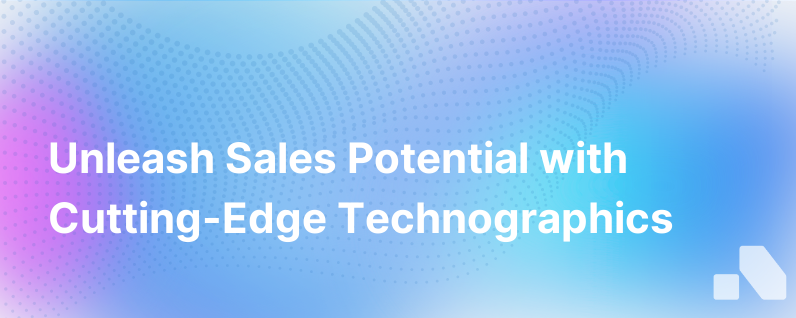
In the increasingly competitive landscape of B2B sales, understanding your target customers extends beyond who they are and what their business needs are. Knowing what technology they use—technographics—can transform your go-to-market strategy.
Technographics refers to insightful data about a company's current technology stack, or the products and solutions they're using to operate and grow their business. It includes information like which software tools, platforms, and applications are being utilized within a company. This technology profiling offers a more nuanced understanding of potential buyer needs, preferences, and pain points.
Why Technographics Matter
The implications of technographics data for sales prospecting and account planning are substantial:
-
Prioritizing Leads: By understanding a prospect’s current tech stack, sales teams can prioritize leads based on whether their solutions complement or improve that infrastructure.
-
Personalized Outreach: Technographics inform more customized and relevant sales pitches, demo experiences, and content strategies that speak directly to the pain points associated with or capabilities of the technologies that prospects use.
-
Competitive Insights: Knowing a prospect's tech stack can shed light on their business processes and where they stand in terms of digital maturity compared to their competitors.
-
Cross-Selling and Upselling: A clear picture of a customer’s technology use can help identify opportunities for cross-selling and upselling additional relevant products.
-
Market Analysis: Analyzing technographic data across a sector can reveal broader market trends, offering strategic insights into which technologies are gaining traction in a particular industry.
How to Leverage Technographics in B2B Sales
Here are tips on incorporating technographics into your B2B sales strategy:
-
Target Account Selection: If your solution integrates well with a specific software, target companies using that software. Technographic data helps you narrow down the vast ocean of prospects to those most likely to benefit from your solution.
-
Customized Messaging: Use technographic insights to frame your solutions in language familiar to the prospect’s tech environment. Highlight specific benefits of your offering in the context of their current stack, such as ease of integration or improved functionalities.
-
Competitive Displacement: If you offer a superior alternative to a product that a prospect is currently using, technographic data can help you build a business case for switching.
-
Sales Enablement: Equip your sales reps with technographic insights so they can have informed conversations with prospects, navigating tech-related questions with ease and authority.
-
Risk Mitigation: Technographic analysis can reveal dependencies on legacy systems that may pose risks to your implementation, allowing you to address these issues proactively.
Gathering Technographic Data
Collecting technographic data can be challenging, but here are some methods:
-
Prospect's Digital Footprint: Analyze prospects’ job postings, press releases, case studies, and digital properties to glean insights into the tools and technologies they may be using.
-
Third-party Data Services: Access comprehensive technographic profiles via databases and services like BuiltWith and Datanyze that offer technology adoption and usage information.
-
Networking and Industry Events: Participate in webinars, forums, and conferences to understand the latest technology trends and see what solutions are favored by your target industries.
-
Direct Surveys: Conduct surveys or have exploratory conversations with prospects to gather information on their technology stacks.
-
Integrating Technographics with CRMs: Incorporate technographic data into your CRM like Salesforce or Hubspot to access this data in your day-to-day sales processes.
Real-world Application of Technographics
Consider an enterprise SaaS company offering cloud-based collaboration tools. By using technographic data, they target businesses still reliant on on-premise solutions. The company then crafts personalized messaging highlighting ease of transition, scalability, and cost-effectiveness of its cloud services compared to legacy systems.
On discovering a prospect relying heavily on a competitor's tool, the company can also tailor demos to showcase superior features or a more inviting user interface, directly addressing shortcomings of the current tool in use. This way, technographics not only inform who to target, but how to position your solution for maximum impact.
Moreover, understanding common technographic profiles within industries can guide product development, ensuring your offering integrates seamlessly with popular platforms and applications your prospects are already using.
The Role of AI in Technographic Intelligence
Leveraging AI can greatly enhance the efficiency and accuracy of technographic intelligence. Advanced AI platforms like Aomni can identify and analyze technographic data at scale, ensuring that sales and marketing teams have access to up-to-date and detailed insights. These tools can streamline the integration of technographic information into sales workflows, enhancing strategic decisions and tailoring outreach effectively.
By implementing AI-driven technographic intelligence, companies can not only refine their immediate sales approach but also continuously adapt to evolving technology trends and customer needs, maintaining a competitive advantage.
Conclusion
In a data-rich world, the old adage 'knowledge is power' has never been more apt, and technographic data is now a critical component of that knowledge. Understanding the what, why, and how of technographics is key to sales success.
For B2B sales teams, staying informed on the technologies their prospects use isn't just about being prepared—it's about being strategic. Technographic data empowers teams to approach the modern sales process with precision, insight, and a deeper connectivity to the needs of their potential customers. It's not merely a nice-to-have; it's a necessity for the data-driven, competitive edge that thriving startups require.